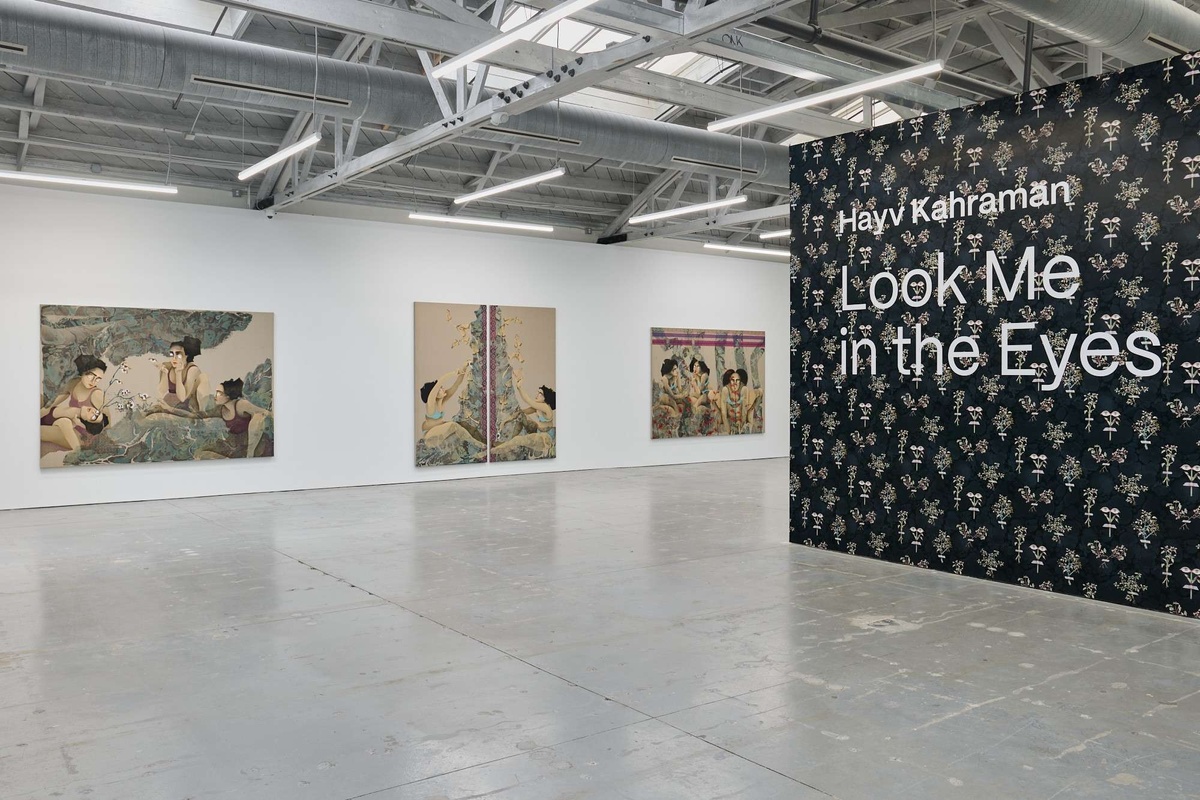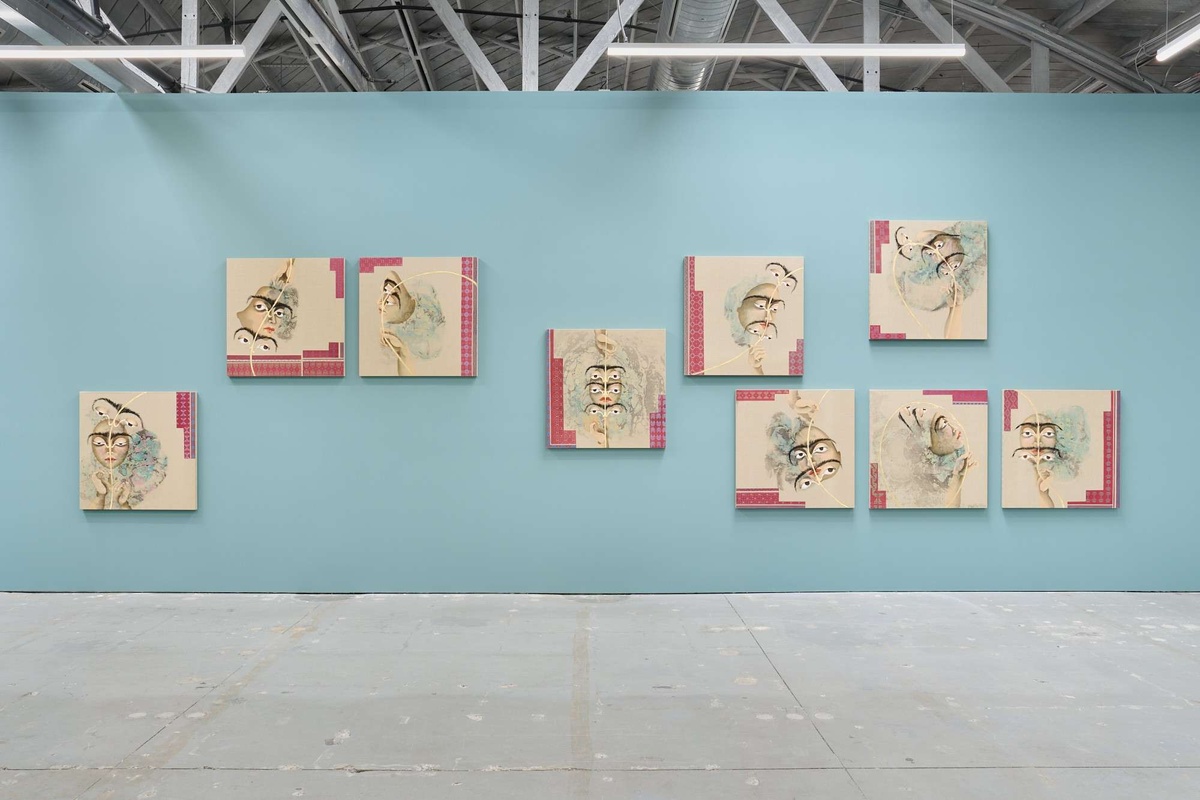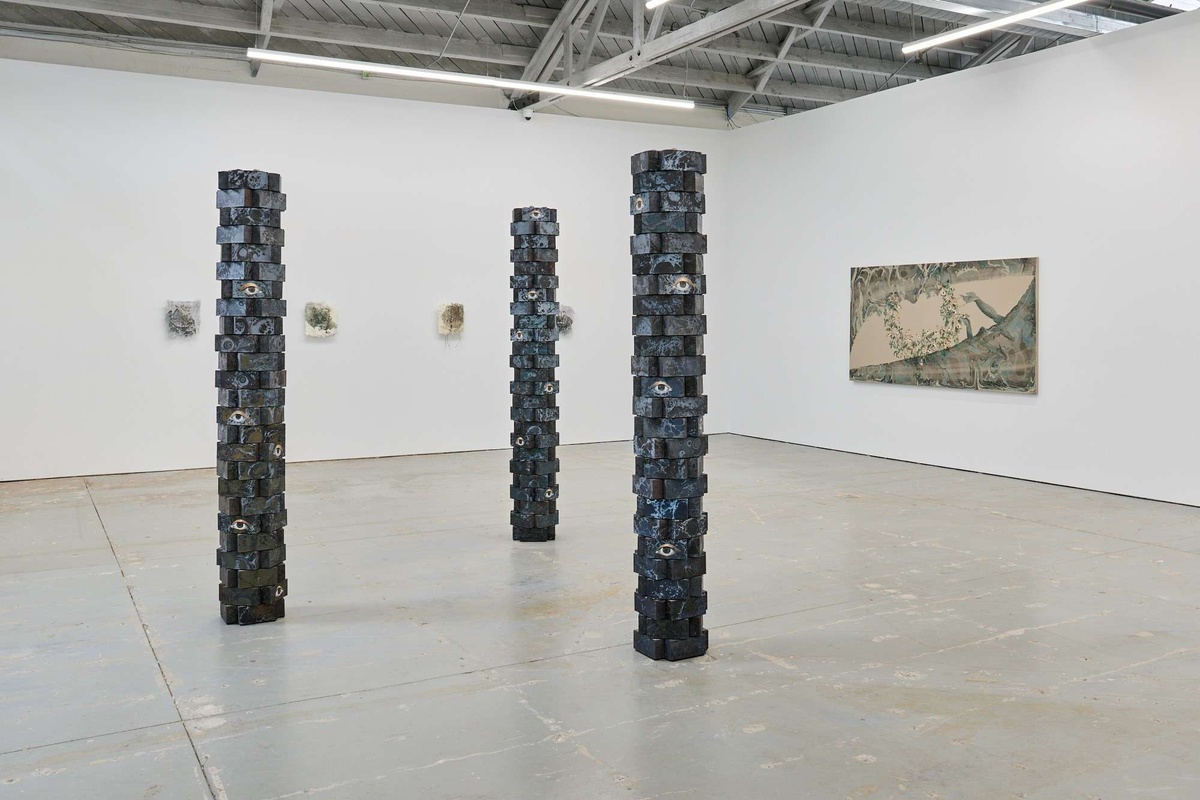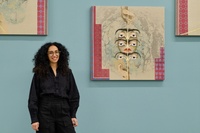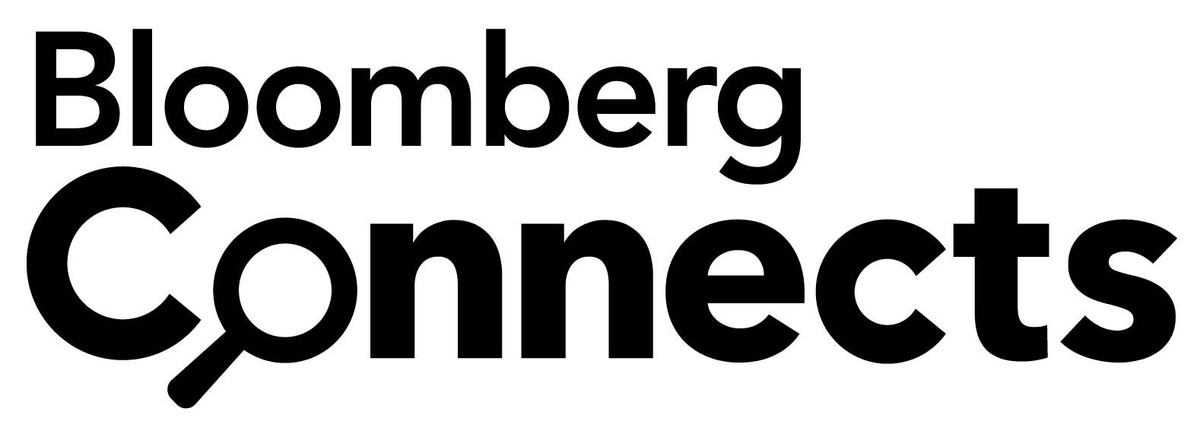Look Me in the Eyes
Hayv Kahraman
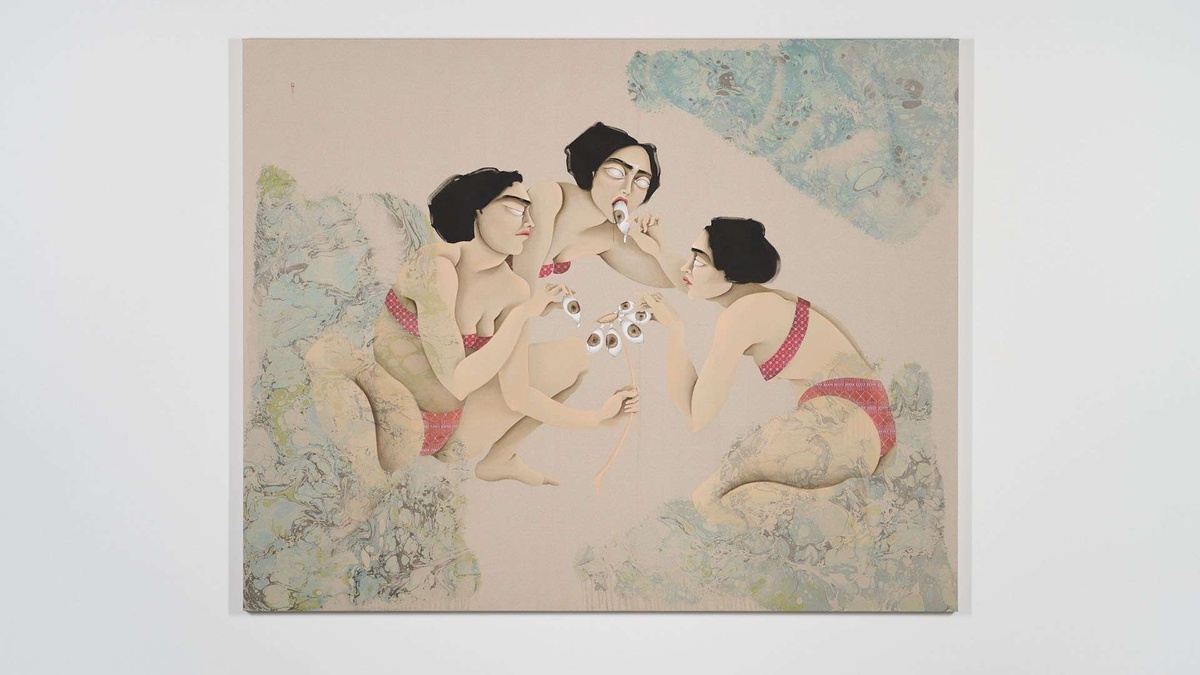

Look Me in the Eyes is Hayv Kahraman’s largest solo museum exhibition to date. Featuring all new work, the exhibition continues the powerful visual and conceptual elements that have been tenets of Kahraman’s practice, while also marking a momentous new phase of the artist’s career. Alongside new paintings and never-before-seen large-scale sculptures constructed in layers of marbled brick with painted eyes, Kahraman is introducing her first ever audio installation—a deeply personal work about her family’s refugee experience.
Kahraman’s work is a nuanced balance of autobiographical and collective experiences informed by her own upbringing as an Iraqi/Kurdish refugee in Sweden. Through representations of a woman figure (a near, but not quite self-portrait), Kahraman examines conditions of migration and immigration in the West, exposing the simultaneous hypervisibility and invisibility of othered bodies. Look Me in the Eyes contends with the colonial gaze, pushing against erasure and insisting that we see both these insidious histories and one another.
Three visual elements weave continually throughout Look Me in the Eyes: Kahraman’s signature heavily browed and lidded eyes; botanical imagery; and a newly explored marbling technique. Eyes follow the viewer throughout the exhibition. They hauntingly appear without irises in figures’ faces, speaking to the horrors of government tracking through iris recognition technology and allowing these women a chance of escaping surveillance. Elsewhere, eyes appear fragmented from their bodies on plants or sculptures, meeting the viewer’s gaze and implicating us into the work, and thus into these systems of social and political power structures.
Botanical studies and forms figure throughout Kahraman’s work as a quiet but powerful cipher for colonialism. As foliate imagery crosses the paintings, entwining at times with anatomical forms, Kahraman highlights how Western academics have reclassified indigenous plants, entirely eradicating native knowledge systems in the process. Finally, she ties all of this together through a recently adopted technique of marbling—an artistic mode that has traveled across cultures and eras. This technique for Kahraman is a way of relinquishing control, as she cannot determine the patterns that will emerge from paint and water. Marbling an object or surface renders each one entirely unique, a potential metaphor for resisting assimilation and its insistence on sameness.
Just as the marbled pattern swirls and pools across this exhibition, seemingly disparate themes and artistic approaches entwine to create a profound and cohesive meaning. Look Me in the Eyes weaves intricate layers of Kahraman’s personal explorations and historical research into subjects that connect and overlap, demanding our attention and challenging assumptions of the “other.”
Upcoming Events
Support for Look Me in the Eyes is provided by lead sponsors Mia and Danny Conway, Pamela and David Hornik; exhibition sponsors Heidy Braverman and David Skinner, Tad Freese and Brook Hartzell; and exhibition partners Jack Shainman Gallery, New York, Pilar Corrias, London, The Third Line, Dubai, and Vielmetter Los Angeles. Additional support provided by Kelly-Moore Paints.
Hayv Kahraman was born in Baghdad, Iraq in 1981 and now lives and works in Los Angeles. A vocabulary of narrative, gender fluidity, and dynamics of non-fixity found in diasporic cultures are the essence of her visual language and the product of her experience as an Iraqi refugee/come émigré. Through her work Kahraman explores the body as a methodology to complicate normative perceptions of what it means to be human today.
Kahraman’s recent solo exhibitions include The Foreign in Us, Moody Center for the Arts, Houston, Texas (2024); The Touch of Otherness, SCAD Museum of Art, Savannah, GA (2022); Gut Feelings, The Mosaic Rooms, London, UK (2022); Acts of Reparation, CAM St Louis; Audible Inaudible, Joslyn Museum of Art, Omaha; Sound Wounds, Asian Art Museum, San Francisco; Gendering Memories of Iraq—a Collective Performance which has been staged at CAM St Louis, Birmingham Museum of Art, Nelson-Atkins Museum of Art and Duke University; Reweaving Migrant Inscriptions, Jack Shainman, New York; Audible Inaudible, The Third Line, Dubai; How Iraqi are you?, Jack Shainman, New York.
Recent group exhibitions include Ten Thousand Suns, Sydney Biennale 2024, Sydney (2024); The inescapable interweaving of all lives, Kunsthalle Düsseldorf, Düsseldorf (2023); O Quilombismo, Haus der Kulturen der Welt (HKW), Berlin, Germany (2023); In the Heart of Another Country: The Diasporic Imagination in the Sharjah Art Foundation Collection, Deichtorhallen Hamburg (2022); Our whole, unruly selves, San José Museum of Art, San José (2021); Reflections: Contemporary Art of the Middle East and North Africa, British Museum, London (2021); New Time: Art and Feminisms in the 21st Century, Berkeley Art Museum, Berkeley (2021); Henry Art Gallery, Seattle, WA (2019); ICA Boston (2019); and MASS MoCA, North Adams, MA (2019).
Kahraman was shortlisted for the 2011 Jameel Prize at the Victoria and Albert Museum and has received the award Excellence in Cultural Creativity, Global Thinkers Forum.
Find exhibition insights, audio content, and more by viewing our free exhibition guide on Bloomberg Connects, the free arts and culture app. Plan your visit, explore our exhibitions on site, and then dive deeper into your favorite works at home—or anywhere, anytime!
